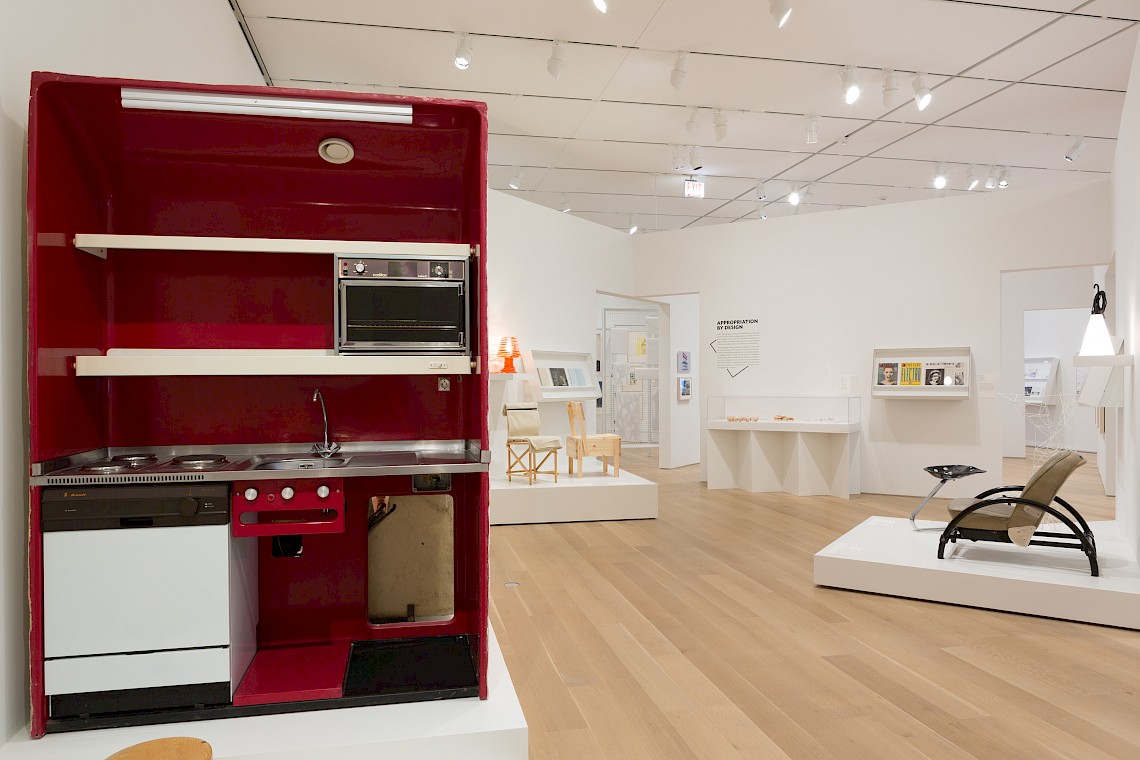This fall has brought no shortage of design events and exhibitions to Chicago, the hometown of American architecture. In addition to exhibitions at the Graham Foundation and Chicago Architecture Foundation, this year’s Biennial ties together numerous tours, performances, events, and allied shows in two and three dimensions.
But no other event seems to complement the Biennial so well as the inaugural presentation of the Art Institute’s permanent Architecture and Design collection. Entitled Past Forward, the issue-driven survey presents some of the Art Institute’s most impressive holdings and explores how visionary ideas have shaped the character of public life in Chicago and around the world. It dovetails neatly with Johnston Marklee’s injunction to “Make New History” and trades inspiration with the Biennial in both directions: some of the well-known drawings presented in the exhibition became source material for projects at the Cultural Center, while some of the previous Biennial’s highlights have joined other design luminaries here in the Modern Wing.
In the days before the Biennial opened I sat down with the curatorial team behind Past Forward to discuss the parallels and productive contrasts between the two exhibitions taking shape on either side of Michigan Avenue. Here is a transcript of my conversation with Zoë Ryan, John H. Bryan Curator and Chair of the Department of Architecture and Design; Alison Fisher, Harold & Margot Schiff Associate Curator; and Maite Borjabad López-Pastor, Special Projects Assistant Curator.
CAB Blog: I'd like to start with the names of the exhibitions because I think there’s a suggestive parallel there. Past Forward and Make New History are both concerned with how images, visions, models, and artifacts from the past are continuing to shape the way that we live, and how they inform the ways that architects imagine new ways to live. The Art Institute is presenting works from a collection whereas the Biennial is commissioning new work, but I'm curious how you think of the dialogue between those two methods of displaying work.
Zoë Ryan: Our current installation was a collaboration within our department, but also across the museum. We really wanted galleries that reflected modern and contemporary architecture and design and the diversity of practice that takes place. The diversity of visionary ideas, and how those have played out in all kinds of media, was very important to us.
We had a lot of discussions as a team about how we wanted to make sure that the work felt relevant to today. All of the projects are very forward looking, and they're very future looking. That was something that we earmarked early on as important to our project. We want people to come and feel like history has a resonance to them today.
We didn't want to just do a narrative display that was purely chronological—where we're just marking moments in history. The idea was to be very issue-driven and focus on major moments and movements throughout the 20th and 21st century, through which we could cast a lens on specific work.
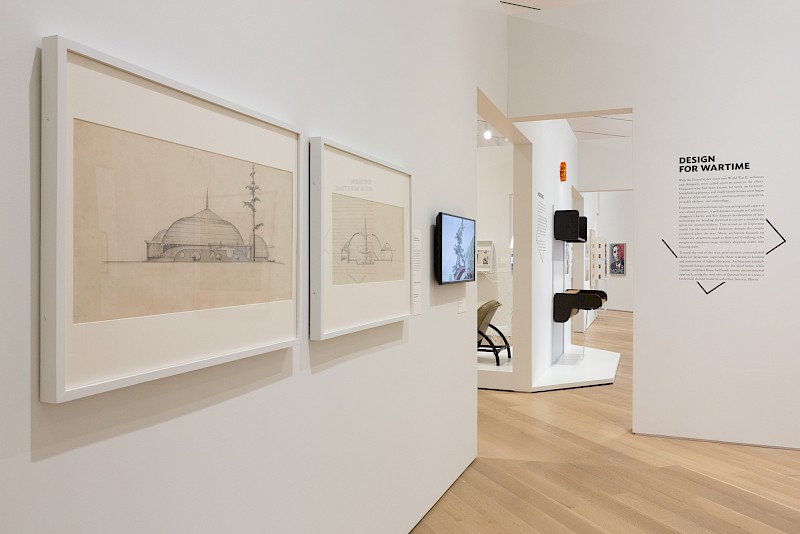
We're also very conscious that the audience, like the audience that goes to the Biennial, is a very diverse audience that includes the general public as well as architecture and design enthusiasts.
It’s important for me that when you come to the Art Institute, you understand not only about Chicago and the Midwest, but that through our collection we can tell a story of how important Chicago and the Midwest have been to the rest of the world. These are stories that have an international resonance.
Alison Fisher: I think that obviously, the end product is very different from the Biennial. It's a very different condition, we have different materials, and the way we work with architects is very different. But I think the common thread is, like Zoë said, that audiences have to care. The show has to be important to them as people and in their everyday lives or else we lose them at the front door.
Hopefully you can see that even going back to 1870, the choices we've made with the exhibition have to do with not just showcasing our most important things, but also demonstrating successfully to the audience that these issues we’re highlighting recur over time.
As you walk through the gallery, you'll even see that we show the visionary city and as well as the real-life process of making the city. We go from early ideas about what cities would be after the industrial revolution and what people were thinking about from the 1960s through the present, so that if you're trying to find a thread through each topic, you can see it in the exhibition.
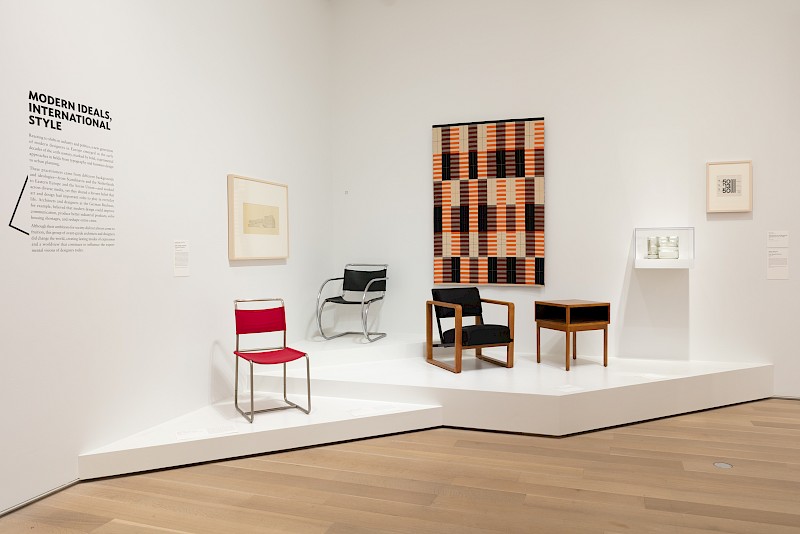
Zoë Ryan: Another thing that ties us together, I think, is that we share similar interests with Johnston Marklee about interrogating exhibition-making, full stop. What is an exhibition and how do you make an exhibition? An exhibition isn't an archive and it's not just showing an archive on the wall. It’s an entire spatial experience.
The issue-driven nature was really key because we wanted to show the types of issues that affect us all, and the issues that have challenged people to think differently. These are visionary ideas and we make clear that, whether a project is realized or not, it still has validity as an idea and it still can be really influential.
You see that all the way through the installation. We're not telling one story, we're telling multiple stories, and we're also leaving the sections quite open-ended for people to connect and have their own lens through which to see the show.
As Alison said, there is a cyclical nature to these ideas. Depending on who you are, where you're standing, and the time and place in which you live, obviously you see things differently. That was very important for us, that we wanted multiple entry points into the work.
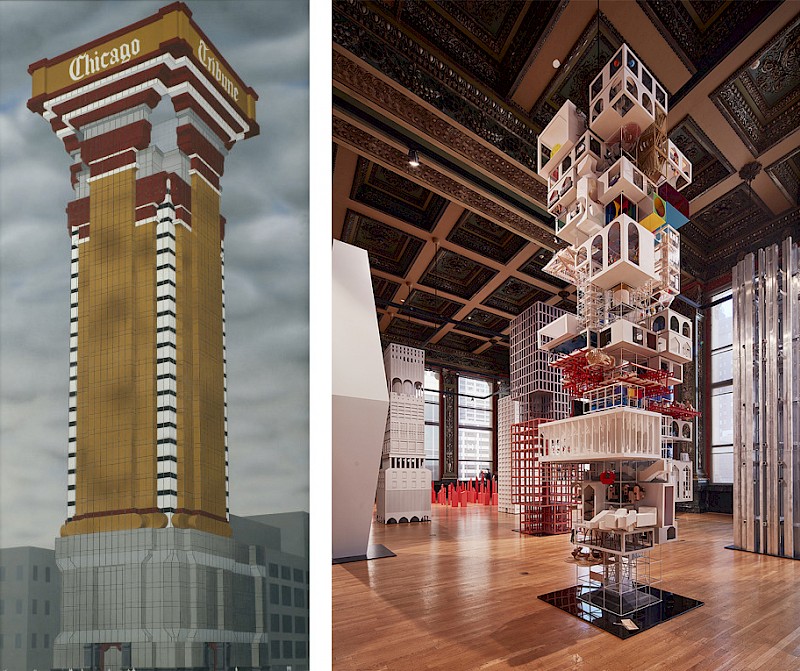
CAB Blog: What do you see as some of the differences in approach that make Past Forward and Make New History complementary experiences?
Zoë Ryan: I think one thing that defined my thinking is the treating history of like a science, in that it can be disproven. When we think about people that made their mark in architecture and design, certain names always tend to bubble up. For us it was very important that we injected other names into that narrative who we think are equally important as the “heavy hitters,” but have not been so heavily cast throughout history and in the textbooks. People like Charlotte Perriand come to mind, who are well known in our world but less known in other worlds. Or Bruce Goff, who is one of our favorites.
I think this is a different way for us to make a contribution to the field. We can shed light on other names and other people that were working in similar or radically different ways at certain periods of time in the past. Bertrand Goldberg, for example, is just such a wonderful counterpoint to Mies van der Rohe, for example, in the way that he envisioned the city and talked about how we should live.
Maite Borjabad López-Pastor: Some of the names are really contemporary, like Johnston Marklee, who you are more likely to see in something like the Biennial because they are actively producing now. You see their work in a very different way in this exhibition because it relates history from the past to the very contemporary moment.
I think it’s interesting that for some of the designers who may even be doing something across the street, their work has also entered the collection at the museum and it’s being put in conversation with other figures that maybe they never had a dialogue with. The moment the work comes here and you start to see it with a little more distance, you find new readings happening in the galleries.
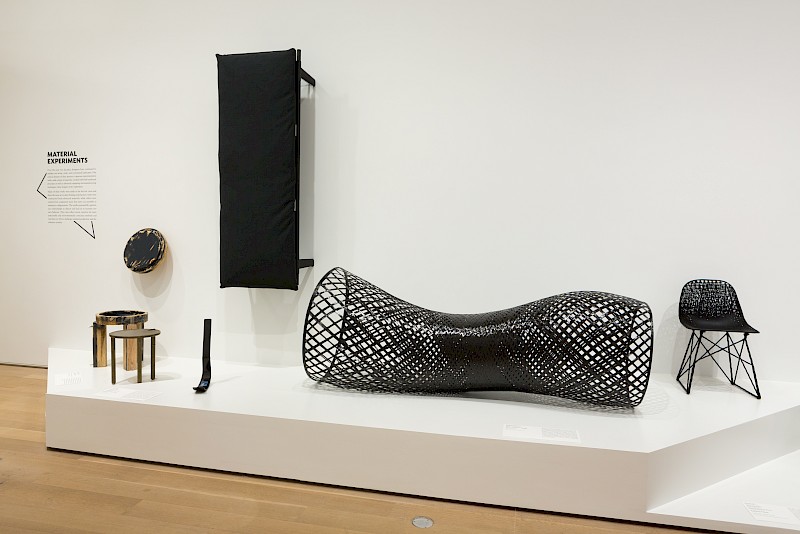
CAB Blog: Right. Seeing so many participants from the first Biennial in this show at the Art Institute is a really exciting transition because those projects have gone from an atmosphere where they’re exhibited as new experiments and proposals to this new context, in the context of a much broader sweep of visionary ideas.
Maite Borjabad López-Pastor: This is an exhibition where you can see historical projects and ideas right next to very contemporary figures. It helps you see connections that, of course, architects might mention, but you usually never see so explicitly. Here you see all these works literally side by side and you're able to render historical connections through the galleries, which is really explicit way of seeing those.
Alison Fisher: I also think that, although certainly the museum has a way of canonizing or legitimizing certain narratives, we've been trying as much as humanly possible to not pursue that approach.
In the same way that the biennial is trying to track what is happening across the field at a very quick pace, the form of these galleries is designed so that they can be part and parcel of our rapid collecting. We're looking at the world today and finding objects that are made, and that are part of our trajectories, as well as things that are actually just quick ideas.
Zoë Ryan: I think that we wanted to apply a light touch; that was very important. There is so much slippage in our galleries — it's not like you're in closed boxes. You're always slipping between different time periods and different disciplines. So I would say one of the biggest things that's going to differentiate us is the mix of disciplines in our galleries, and the fact that design is at the table, which I feel very strongly about.
You'll see that speculation, for example, plays out constantly across the galleries, but in different ways. Architects are using it in a certain way, with a lot of reference to history, whereas designers can be using it quite differently, and their use of fiction and narrative is very different.
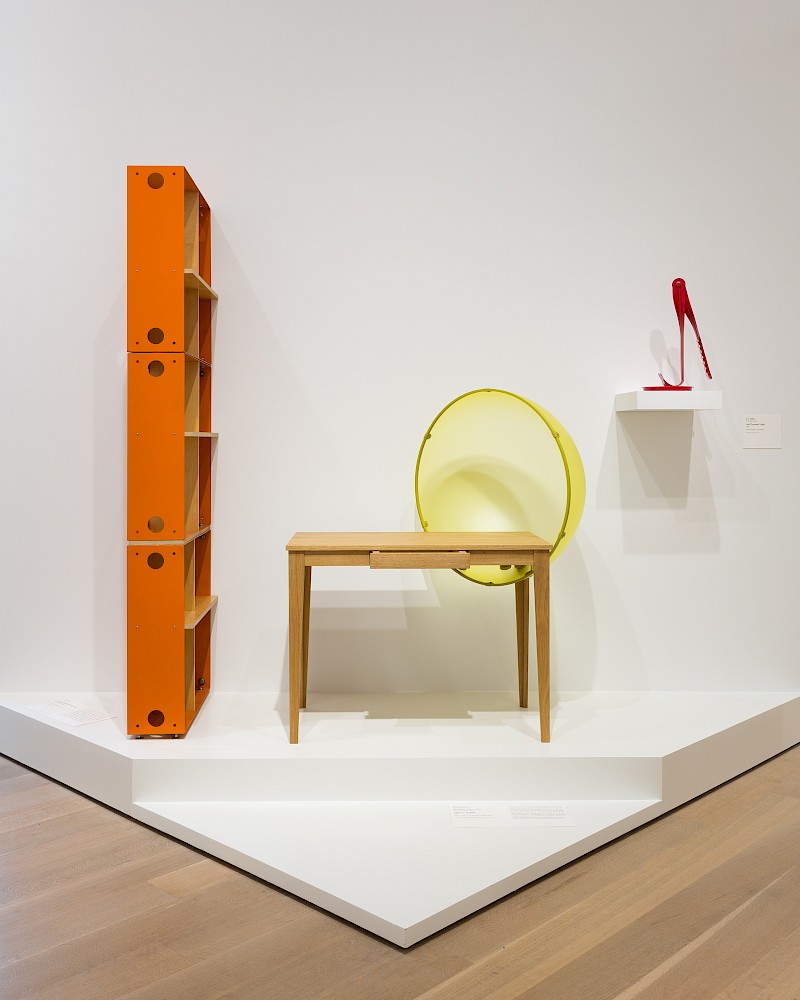
CAB Blog: That expanded frame is one reason the shows complement each other so well. Everyone who visits the Cultural Center and then crosses the street to the Art Institute will have this revelatory moment when they see the original works that inspired the projects in the Biennial.
Zoë Ryan: I think that's the amazing thing about having a collection. You can provide some of that context. We are very fortunate that the collection, although it's very specific in terms of what is in the collection, does enable us to tell these stories and cross this huge spread of time.
We think about context a lot because we are an encyclopedic museum, so we never see our work alone. We always see it vis-a-vis all the other creative disciplines and practices that are presented at the museum. Someone might be coming from the Asian galleries into our galleries, or they might be coming from the modern and contemporary art galleries. Our goal is to help to situate audiences and then take them through a journey in our galleries.
I think it's interesting for us that Johnston Marklee chose to be so referential in nodding to Chicago and using what has happened here to move the conversation in architecture forward. It’s very exciting to have someone else doing that too, in addition to us from outside the city, which is going to be fun to see.
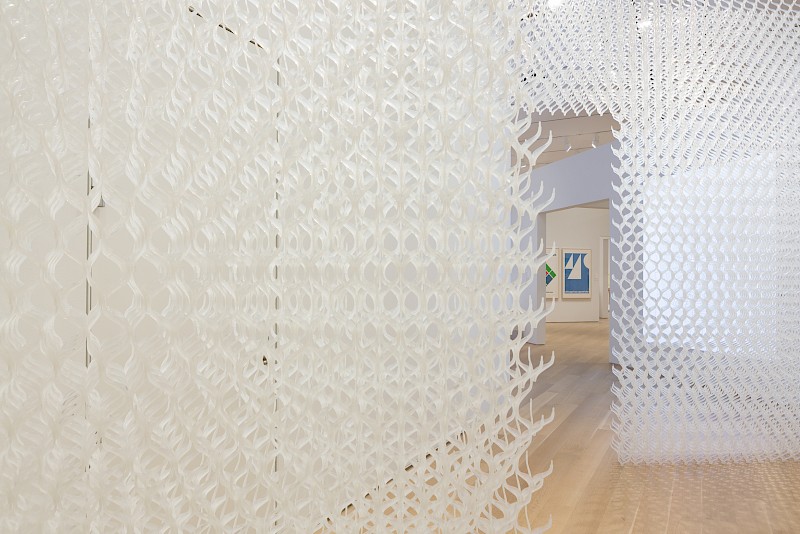
CAB Blog: There’s one last thing I’m curious about, which is what you're looking out for when your team is collecting and how you're keeping an eye on it. I was excited to see a selection of projects from the previous Biennial on the walls. I'm curious how you sift through what you see in person, at exhibitions, on Instagram, and so on?
Zoë Ryan: I'm quite indiscriminate. The architecture and design collection has been amassed for many decades, so you are seeing work that we have collected as a team and work that our predecessors have collected. Some pieces are very specific to exhibitions that we have worked on in the past, such as the pieces from BLESS, including their incredible hairbrush.
So you're seeing a history of the Art Institute in many ways and the exhibitions and projects that we've worked on. Of course, we continue to dig, but with an understanding of what we already have in the collection and the stories that we can tell. For me it's been very helpful to have themes or groupings that can then provide criteria for as we go forward, because we can flesh out some of the themes, we can go deeper, and we can watch and follow certain practitioners and makers who we're particularly interested in for potential future exhibitions.
I’m also interested in how we can also bring other voices to the table. We have had so many people advising us along the way on this project and others, from within and outside of all kinds of institutions. We're excited about bringing in scholars or enthusiasts or architects and designers to work on certain themes or to help us build certain areas of the collection so that we can shed light on new things.
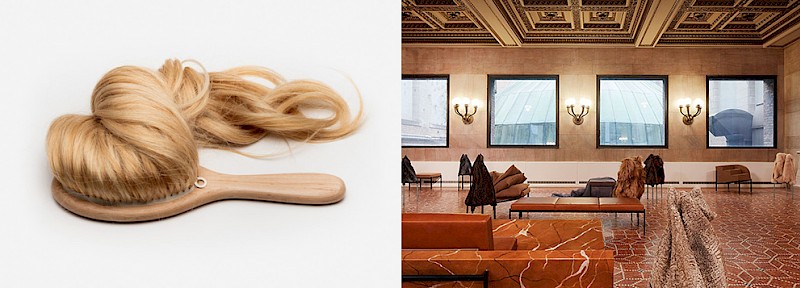
Alison Fisher: We should say also that the research we did for this exhibition is meant to be maybe three years' worth of shows, because we had a whole room full of themes that didn't make it into the first one.
And we’ve learned so much from talking to artists and designers who are also collectors. It’s been this dynamic conversation with people who are both makers and historians of their own disciplines and collectors of their own materials, which has been really fun.
Maite Borjabad López-Pastor: I think also the exhibition has allowed us to do a really broad scan of our collection to identify which points we might hold on or some discoveries also.
For me the whole collection was a discovery, and the section in the exhibition on designing the contemporary museum came out of that. I realized that we have many, many designs of museums, which is really representative of the current moment. I mean, we are building a crazy amount of museums in the 21st century. It's a contemporary discourse in art and architecture, and it happens that we have many of very important museums in our collection, starting with our own new wing. So that’s one spot where we might keep going in one direction because we already have some incredible works that allow us to start a conversation.
We're also in a moment where how we acquire architecture and design is still an ongoing process, and there are differences between the way that Alison might be acquiring or I might be acquiring. We’re always working with different people, including living architects, so the conversation is always different.
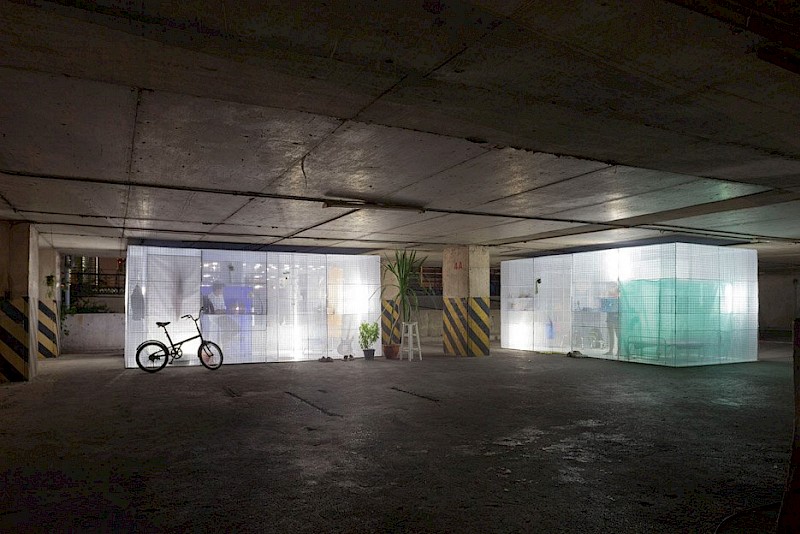
Zoë Ryan: We look across a very broad spectrum of venues for work, but the Biennial for us specifically is such fruitful ground, and obviously we’d like to build those relationships and to make those connection points.
Like Maite said, I think there is definitely an active conversation about acquiring existing work versus work that we might want to commission because the museum has this incredible history of commissioning work, all the way from Louis Sullivan's System of Architectural Ornament portfolio that the Art Institute commissioned in the ‘20s.
And we definitely want to include young talents and people working at the forefront of visionary ideas, but often we also want to follow people and see where they go. It's not like collecting is a one time hit. I am interested in seeing how practices shift and change over time. I'm interested to see some of the names from the last Biennial to see what they're doing in this Biennial.
The Chicago Architecture Biennial is sharing and collecting media using Are.na, a new kind of platform for creative research. Explore the channel below for more on exhibiting architecture, or visit the Biennial’s Are.na profile.



